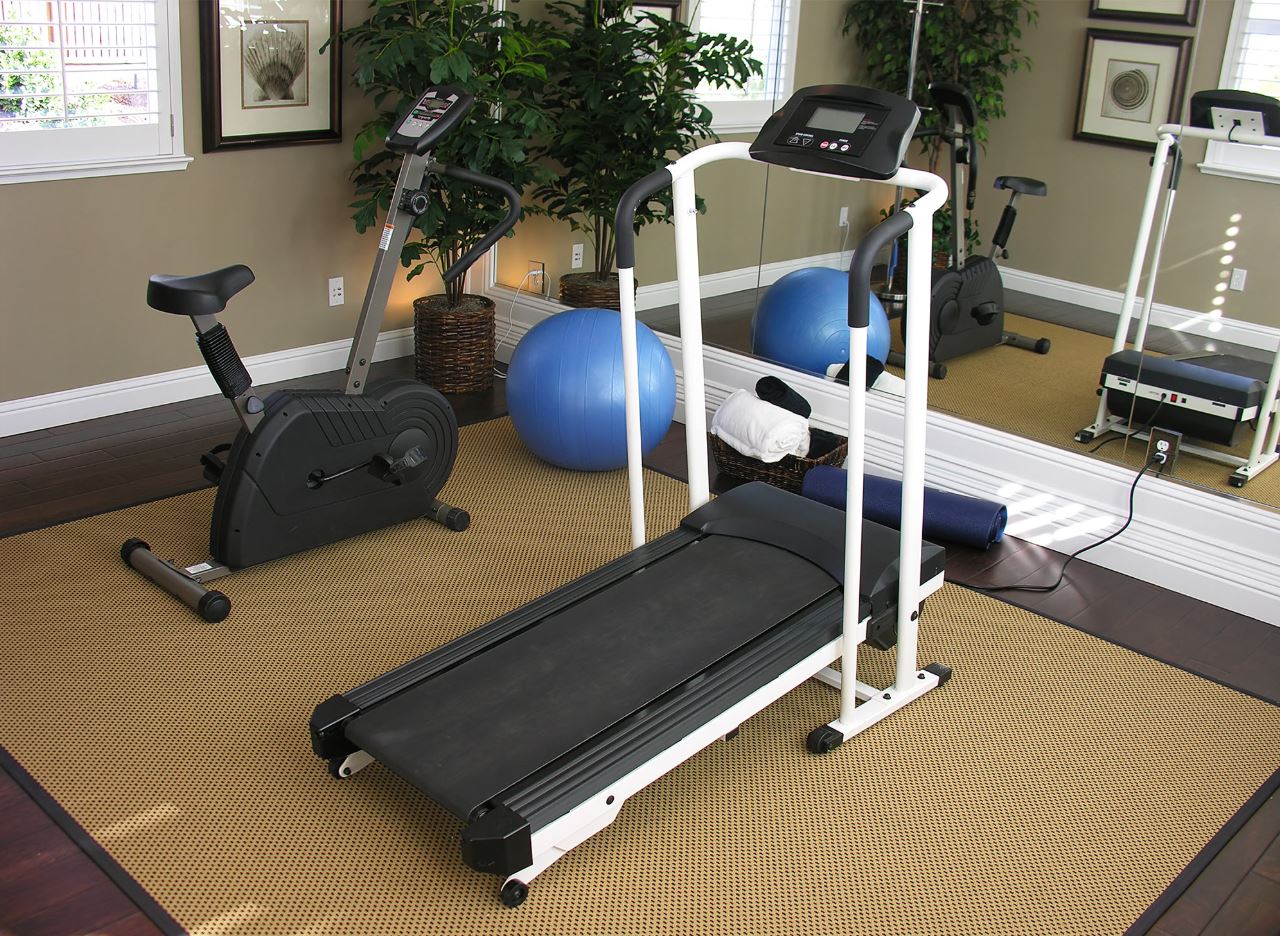Establishing a secure and efficient workout area within your home is crucial to avoid injuries and maintain steady progress. Whether lifting weights, using cardio machines or working with resistance bands, these 20 home gym equipment tips will help you stay safe while maximizing your workout potential.
- Choose the Right Equipment
- Engage in long-lasting, high-quality equipment that fits your space and exercise objectives.
- Steer clear of purchasing cheap, shoddy products that are prone to malfunctioning or breaking.
- Designate a Safe Workout Space
- Make sure you have enough space to move about freely and that the environment is clear.
- To lessen the chance of tripping or running into things, keep your surroundings clear of clutter.
- Inspect Equipment Regularly
- Explore the rivets, cables, and antagonism bands in particular for gestures of wear and incision.
- Replace any damaged parts as a way to prevent mishaps.
- Use Proper Lighting
- You can see your equipment well in a well-lit area, which lowers the possibility of mistakes.
- If there is not enough natural light, install portable lamps or overhead lighting.
- Warm Up Before Starting
- To get your muscles ready, spend five to ten minutes performing dynamic stretches and modest aerobic exercises.
- The danger of sprains and injuries is decreased by warming up.
- Wear Appropriate Workout Gear
- Wear supportive shoes and cozy, moisture-wicking apparel.
- Stay away from loose clothing that could snag on tools.
- Learn Proper Techniques
- To guarantee correct form, watch instructional videos or speak with an expert.
- Injuries and muscular imbalances can result from improper form.
- Start with Light Weights
- As your strength increases, progressively increase the weight from manageable starting points.
- Muscle and joint tension might result from overloading too rapidly.
- Secure Weights Properly
- Weights can be kept from slipping off bars by using collars or clips.
- Before using the dumbbells, make sure the screws are tight.
- Keep Equipment Clean
- Maintaining the condition of your equipment can also be achieved by cleaning.
- Cleaning also assists in maintaining the situation of your equipment.
- Hydrate Consistently
- To stay hydrated when performing, have a drinkware close at hand.
- Fatigue and poor performance are two consequences of dehydration.
- Set Realistic Goals
- Adhere to a strategy that is appropriate for your level of fitness to prevent overtraining.
- Pay attention to your body and take days off when necessary.
- Secure Cables and Resistance Bands
- Securely anchor bands to prevent breaking or unexpected release.
- Before every session, inspect cables for fraying or weakening.
- Use Safety Features
- Make use of the built-in safety features on equipment like squat racks and treadmills.
- Adapt the parameters to your body type and degree of fitness.
- Avoid Distractions
- Reduce the amount of time you spend on your phone or multitasking while working out to maintain focus.
- Maintaining appropriate form and preventing accidents are two benefits of concentration.
- Use a Spotter for Heavy Lifts
- Use equipment such as a power rack with safety bars if you are lifting by yourself.
- For more strenuous workouts, having a spotter provides an additional degree of protection.
- Organize Equipment After Use
- Weights, bands, and other equipment should be kept in their proper locations.
- This lessens the possibility of tripping over lost objects.
- Protect Your Flooring
- To stop equipment from slipping and causing surface damage, use rubber floors or mats.
- Besides, mats offer comfort and noise reduction.
- Incorporate Recovery Practices
- After working out, stretch or foam roll to release tense muscles.
- In order to improve flexibility and avoid injuries, recovery is essential.
- Know Your Limits
- To avoid overuse injuries, don’t force yourself to push beyond discomfort or exhaustion.
- Make slow, steady progress at a safe, sustainable pace.
By attaching to these 20 tips, one can have a safe, efficient home gym equipment session within the confines of their own home. Prioritizing protection guarantees long-term success and enables you to consolidate on reaching your wellness objectives without encountering any hindrances.
Last Updated on November 26, 2024 by kingstar





